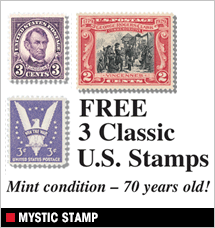The Tenacious Traveler
So Much to See and Do in Cozumel, Mexico

 Much about the island says Mexico. Archeological sites hint of the rich Mayan civilization that once flourished there. Parts of San Miguel, the only town, retain the charms of villages common throughout the country's mainland.
Much about the island says Mexico. Archeological sites hint of the rich Mayan civilization that once flourished there. Parts of San Miguel, the only town, retain the charms of villages common throughout the country's mainland.
At the same time, Cozumel displays its Caribbean roots. White sand beaches are fringed by stately palm trees. The center of the island is covered by dense jungle and swampy lagoons.
Lying 12 miles off the east coast of Mexico, Cozumel is known for offering deep sea diving that's among the best in the world. It's ringed by an underwater wonderland of Technicolor coral heads and submarine gardens that are home to an almost unimaginable variety of sea life. Non-swimmers may enjoy close-up introductions to creatures large and small in a glass bottom boat or mini-submarine, during a dolphin show, by checking out resident crocodiles in their lair, and observing endangered sea turtle hatchlings making their way to the Caribbean waters where they will spend their lives.
Most travelers to Cozumel begin their visit in San Miguel. Once a sleepy village, it has evolved into a popular destination for cruise ships whose passengers patronize shops and restaurants near the docks. Those who venture a few blocks inland find a more mellow setting that retains the heart and soul of the original community.
There, sidewalks are lined by small, family-owned stores and eateries where locals gather. El Mercado, the oldest market on the island, houses a warren of tiny shops and restaurants offering traditional food.
Cozumel derived its name from the Mayans who arrived there some 2,000 years ago. They believed it to be the home of Ixchel, the goddess of love and fertility. According to legend, their temples dedicated to Ixchel earned her gratitude, and she sent her favorite bird – the swallow – as a token of thanks. The Mayan words Kozom (swallow) and Lumil (land) were compacted to Kozomil and the name stuck.
More than 30 Mayan sites are scattered around the island. San Gervasio was the most important setting. Sacbes (ancient elevated roads) connect several building complexes there including temples, an ossuary and ceremonial centers.
The temple at El Cedral was another hub of Mayan life on the island. However, when Spanish conquistadors landed on Cozumel in 1518, they destroyed the structure and the remaining portion provides little evidence of its past glory.
Like most Caribbean islands, Cozumel boasts a choice of inviting beaches. Stretches of golden sand line the western shore, facing the mainland of Mexico. On the less-developed Caribbean Sea side, quiet beaches are interspersed among rock-strewn areas, and the strong breakers and undertow discourage swimming.
Cozumel also is home to parks and preserves which show off both Mother Nature's handiworks and man-made attractions. The Faro Celerain Ecological Reserve does both. The park protects a mixture of mangroves, dunes and reef systems that provide refuge for a variety of wildlife, including crocodiles, iguanas and resident and migratory birds.
Exhibits in a towering century-plus old lighthouse range from maritime navigation to pirates. Cozumel once provided safe haven for buccaneers who roamed the Caribbean Sea, including the notorious Henry Morgan and Jean Lafitte. Some cutthroats hid their ill-gotten treasures in abandoned Mayan structures.
Chankanaab Park includes enough to-see's and to-do's to satisfy many interests. Visitors may stroll through a lush botanical garden, study the colorful inhabitants of a natural aquarium and enjoy a close-up view of the only inland coral reef formation in the world.
The complex includes dozens of replicas of Mayan sites and a working Mayan house that brings to life daily chores like cooking, weaving, and planting crops. A more participatory experience awaits those who wish to take part in a temazcal, a Mayan sweat lodge session intended to cleanse both body and mind.
A pleasant surprise during my visit to Cozumel was how much I enjoyed the kind of attraction that I often avoid. Why, I wondered, should my wife and I spend time visiting a cultural theme park when the real Mexico is just outside? However, the aptly named Discover Mexico site provided a number of reasons.
The experience begins with a multi-screen video presentation that traces the country's history and describes its cultures. This is followed by the main attraction.
We strolled through a setting of tropical vegetation, along pathways shared with turtles and iguanas. The trail passes more than three dozen detailed scale models of famous Mexican archeological sites and buildings. Replicas of structures from the Mayan, Aztec and Colonial periods stand near contemporary architectural treasures. The result is an all-encompassing walk through history.
Adding to authentic touches in the park, the snack bar serves a variety of typical dishes – and where there's food, there's drink. In Mexico, that often means tequila, which locals refer to as "Mexican water." Visitors to the theme park have an opportunity to discover how tequila is made, then sample tastes of several brands.
Sipping tequila is about as Mexican as it gets. So, too, is much about the island of Cozumel, along with attractions usually associated with the islands of the Caribbean.
For information about visiting Cozumel, log onto cozumel.travel.
Victor Block recommends that if you can’t visit a destination you’d like to, read about it. He’s happy to be your eyes and ears.




























































